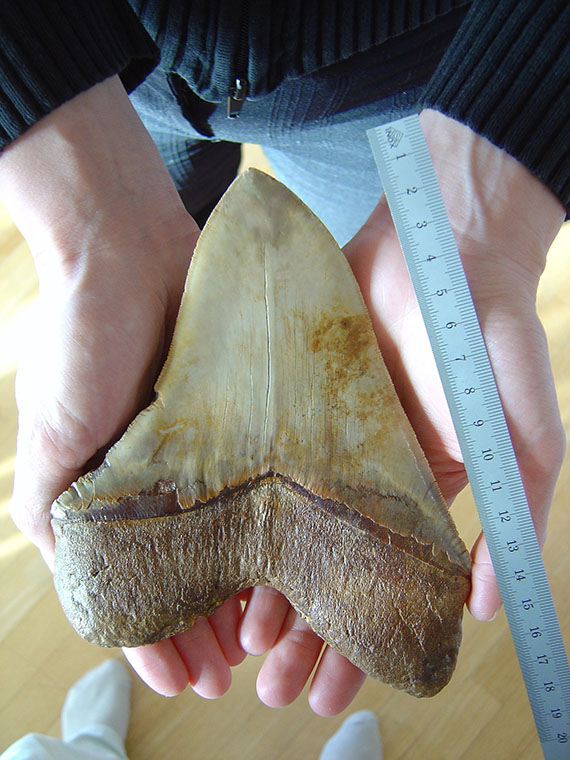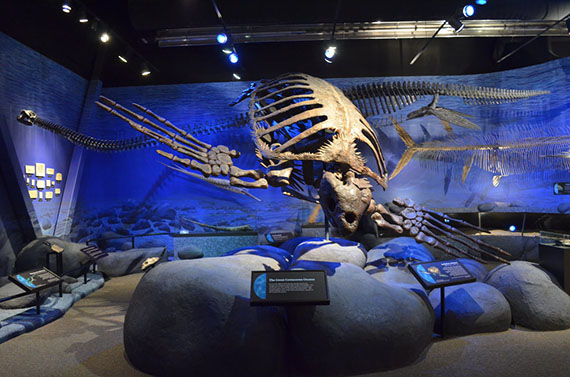
Megalodon is a prehistoric shark which lived approximately 23 to 2.6 million years ago during the Early Miocene to the Late Pliocene Periods. Teeth of these sharks were originally found in rocky formations during the Renaissance and most of the people who saw them thought that they were the petrified tongues of dragons. This notion would continue until 1667 when Danish naturalist Nicolaus Steno realized that these were actually the teeth of a shark. However, it wouldn’t receive its official name until the 1830s when it would receive the name Megalodon – a name which means “big tooth.” These sharks loved to eat not only fish but also dolphins, squids, giant sea turtles and sometimes even whales. Yes, whales! They were able to eat whales because they had an estimated bite force of about 18.2 tons – that’s enough to crush a whale’s head as easily as breaking a peanut shell. That bite force is even more impressive than that of a T-Rex! Most scientists say they were about 60 feet long and may have weighed as much as 75 tons. While that isn’t as impressive as some of the wild claims that this shark was over a 100 feet long and weighed over 150 tons, it’s still pretty big.
Deinosuchus was a prehistoric crocodile which lived approximately 80 to 70 million years ago during the Late Cretaceous Period. Its fossils – which originally consisted of just two large teeth – was first discovered in the mid-19th century by a geologist named Ebenezer Emmons. When he discovered them he placed them in the same category as Polyptychodon – a dinosaur species he thought was a species of crocodile-like reptiles. However, as more fossils were unearthed, it became clear that Polyptychodon was actually a pliosaur, so Deinosuchus was placed into its own genus in 1909. It was then given its own name, a name which means “terrible crocodile” in Greek. It was approximately 33 feet long – or about twice the size of a saltwater crocodile, and weighed around 10 tons – or 20,000 pounds! It also had a very large head that was about 6 feet long and filled with many razor-sharp teeth.
Archelon is an extinct sea turtle which lived approximately 75 million to 65 million years ago during the Late Cretaceous Period. It was first discovered in 1895 by Dr. G.R.Wieland in South Dakota. In 1896, he would go on and name it Archelon – a name which means “ruling turtle.” An average sea turtle is about 7 feet long and weighs around 350 pounds. Archelon, on the other hand, was 12 feet long and weighed around 2 tons – or about 4,000 pounds. That made it about the length of a small great white shark but much, much heavier. This turtle had either bony plates or a leather-like covering that stretched over a framework of bones on its back.




